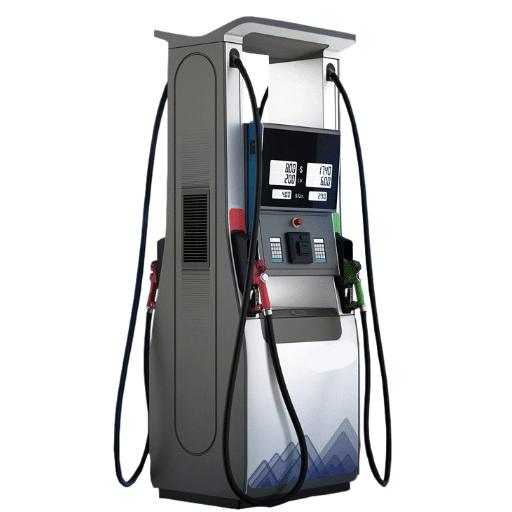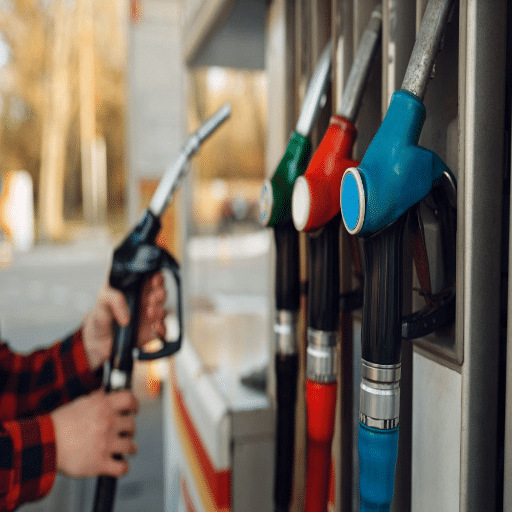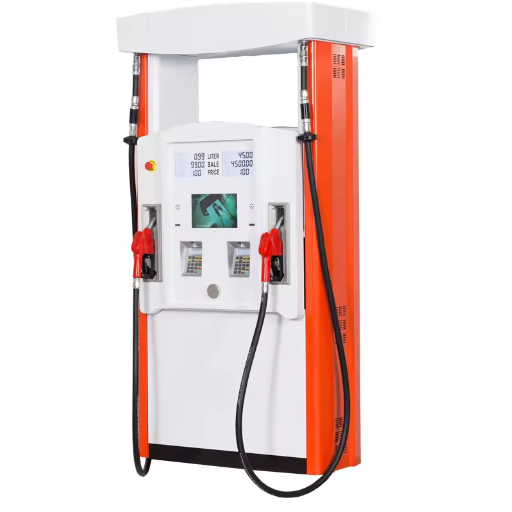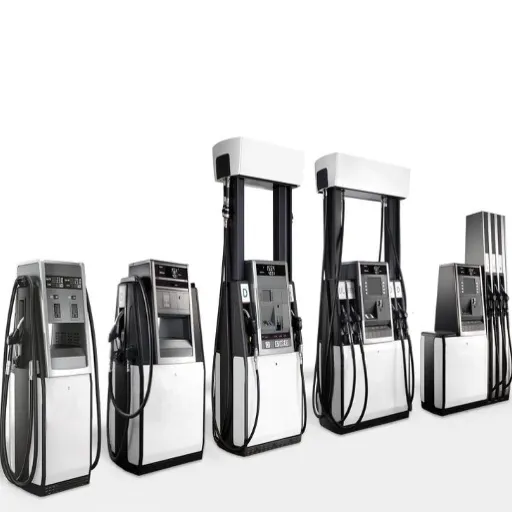When choosing the right water tank to meet your requirements, one often battles between the two most common choices- galvanized steel or stainless steel. Both have advantages and drawbacks, making decision-making far from simple. With the tank type chosen, its effectiveness against the weather conditions, maintenance, and value will come into the equation. So let’s explore some of the fundamental differences between the galvanized and stainless steel water tanks with a comprehensive comparison to help you choose the option you feel is better suited. Whatever the case, be it cost, longevity, or environmental concern, we have it weighed for you. Read on to find out which one fits your needs.
What is the Difference Between Galvanized Steel and Stainless Steel?

The differences between galvanized and stainless steel are primarily in their composition and resistance to corrosion. A layer of zinc is applied to galvanized steel to protect it from rust and corrosion. It is also a cheaper alternative where exposure to water is limited. On the contrary, the zinc coating gradually wears off, limiting its durability over the long term.
Stainless steel’s composition contains chromium and other alloying elements, giving it its most significant resistance to rust and corrosion. Hence, it can be considered the most durable and is suitable for wet atmospheres or harsher conditions. Although stainless steel is more expensive than the other, many applications consider it worthwhile because it lasts longer and requires less maintenance.
Understanding Material Composition
Material compositions improve material performance, durability, and suitability for particular uses. For example, carbon steel, mostly iron and carbon, presents excellent price-quality. Although it lacks corrosion resistance like an alloy of stainless steel, data shows that carbon steel has a tensile strength of anywhere between 400 MPa and 550 MPa and is thus used extensively in construction and machinery. However, coatings are mandatory to prevent rusting.
Aluminum is a lightweight metal used simultaneously in aerospace design and consumer electronics. Because aluminum’s density value is about 2.7 grams per cubic centimeter, it enjoys a premium for providing good corrosion resistance due to an aluminum oxide layer while offering strength and reduced weight. Another advantage aluminum provides is a high-strength-to-weight ratio: It withstands loads well but finally weighs down the structure very little.
Composites give another engineering approach to materials. Carbon fibers and resin matrices produce lightweight, strong, and stiff materials. For example, the tensile strength of carbon fiber composites can reach over 3,000 MPa, making them strongly suitable for high-performance applications, including aircraft manufacture and sports equipment. Though the cost is otherwise high, an investment is warranted when strength is paramount.
Knowledge of these compositions and their features allows industries to make proper material selection, resulting in optimum performance and utilization efficiency.
How Corrosion Resistance Varies
Corrosion resistance widely varies with the shade of material used, considering the environmental conditions and the protective methods provided. Stainless steel, aluminum, and titanium metals usually resist corrosion because a passive oxide film forms over these metals, shielding them from corrosive elements. For instance, stainless steel contains chromium at a percentage varying around 10.5 and above, which, on reacting with atmospheric oxygen, produces a thin layer of chromium oxide that best serves to protect the surface from rust and corrosion after engaging in various environments.
Environmental conditions like moisture, temperature, pH level, and salts or chemicals influence the rate at which a material degrades. For instance, aluminum demonstrates the highest rate of corrosion resistance in a dry atmosphere but stands the risk of corrosion when exposed to marine or acidic environments.
In modern times, corrosion resistance has been emphasized more on all materials owing to advances in coatings and treatments. Studies suggest that metals could last up to four times longer under exposure to harsh chemicals or extreme weather conditions, depending on the provision of high-performance protective coatings, such as zinc or polymer coatings. Anodization is another popular treatment that enhances surface hardness and reduces oxidation, and it is generally used for aluminum.
By properly factoring in these influencing factors and taking due care with appropriate deterrents, industries can choose better materials and optimize their maintenance procedures—all things that finally contribute to reducing the long-term cost burden while enhancing the longevity of the products.
The Role of Surface Protection
Surface protection is of utmost importance for extending the life and enhancing the functionality of materials in various industries. Recent surface protection advancements include polymer coating technologies, ceramic treatments, and cutting-edge nano-coatings. Between these novel solutions, considerable benefits have been observed. For instance, polymer coatings reduce corrosion rates by about seventy percent in marine environments. Ceramic treatments are also pretty impressive, offering excellent resistance to extreme temperature-wetting. They stay intact above 2000 degrees Fahrenheit, fitting well into the aerospace application.
Nano-coatings, a newer innovation, offer ultra-thin layers of pure protection that repel water, oil, or the slightest dust particles, reducing maintenance by 30%. These coatings are widely used in electronics to protect sensitive components from moisture and pollutants. By deploying such advancements, industries can reduce costs, help the environment, and improve product functionality to induce durability and reliability, even in the most challenging conditions.
How Does Cost Compare for Galvanized Steel and Stainless Steel Water Tanks?
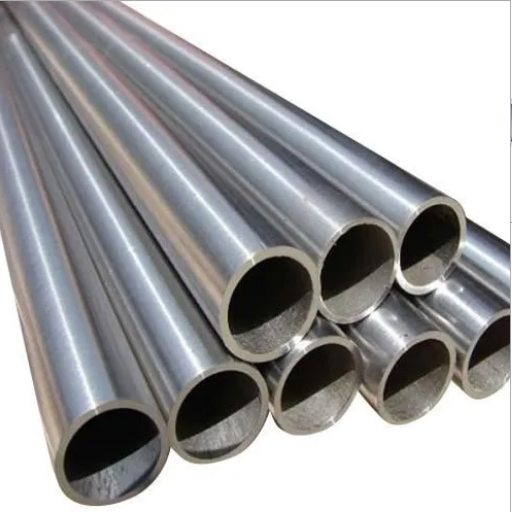
The galvanized steel water tanks are generally less costly upfront than their stainless steel counterparts. From a material point of view, the cheaper nature of galvanized steel translates into the lower cost of manufacturing and supply. On the other hand, stainless steel tanks are more expensive at the onset. Still, their durability and corrosion-resistant qualities would make a better investment, lowering the maintenance cost incurred in the long run. If an application emphasizes longer life and low maintenance, stainless steel might be the value medium despite the high initial cost. Budget considerations are involved, and the choices depend totally upon specific necessities.
Initial Price Considerations
Material selection is an essential parameter in the initial cost estimation for water storage tanks. Plastic water tanks are cheap, with prices ranging between $0.50 and $4.00 per storage gallon, depending on size and thickness. Considering their weight and ease of installation, plastic tanks are best suited for small—to medium-scale applications; they should not be used in high-temperature processes or industries.
Stainless steel tanks typically have higher initial costs, from about $1.50 per gallon for smaller capacities to over $3.00 for large-scale, heavy-duty configurations. Yet the higher price is justified by their longevity and little maintenance; thus, they are a much more cost-effective option for thick, long-lasting requirements for commercial and residential use.
Concrete tanks are mid-range between the two, averaging anywhere from $5,000 to $10,000 for 5,000-gallon capacities. Though professional construction increases upfront costs, they are strong and can be designed for underground installation. Considering that, the immediate budget may be weighed against the expected durability and serviceability of the water tank’s chosen material.
Long-term Maintenance Costs
Proper assessment of tank materials considers long-term maintenance as a determining factor in purchase price value. Plastic tanks tend to be more affordable due to their need for occasional inspection for cracks forming or UV damage arising over time. Depending on the damage, repair costs associated with plastic tanks range between $200 and $500. These tanks generally do not last too long; they usually last 10 to 15 years.
Concrete tanks, nevertheless, remain famous for their rugged durability, but also have high maintenance demands. Structural cracks or water seepage might occur, necessitating costly repairs, typically ranging from $500 to $1,500. They also expect regular sealing for about $700 to $1,000 every 10 years to keep up with their performance.
By contrast, steel tanks, especially those galvanized or stainless steel, require greater rust or corrosion maintenance, mainly in moist or coastal atmospheres. They must be maintained with protective coatings and regular inspection, costing $300 to $800 a year. Though initially expensive, stainless steel tanks tend to have much longer life spans of 30-50 years, reducing long-term replacement costs.
Fiberglass tanks need less maintenance work and are at low risk for corrosion or structural damage; however, their initial cost is high. This fortifies the value by their life of 30 to 40 years, with occasional repair costs of $300 to $600.
When these maintenance costs are weighed against initial prices, the total investments for different tank materials are clearer.
Evaluating Service Life for Investment
The service life of a particular tank material must be considered when working out an investment strategy, with durability and cost effectiveness being two critical factors. For concrete tanks, the normal service life would extend up to 50 years, thus ensuring that they are an excellent long-term investment. Maintenance is usually minimal during that period, but might include periodic inspections and sealing of surface pores to maintain structural integrity.
Conversely, fiberglass tanks usually last 30 to 40 years. Their primary attribute concerning insecurities is corrosion resistance, paramount in environmental settings with moisture and chemical exposures. However, industry records show that underwater fiberglass tanks infrequently maintain maintenance records between $300 and $600.
Plastic tanks, mostly manufactured from polyethylene, tend to have a projected life of 20-30 years. They gain popularity for their cost-effective, lightweight design in short—to medium-term uses. Sometimes, the duration is a little less due to exposure to unfiltered UV rays or extreme weather temperatures.
Steel tanks, especially stainless steel tanks, usually last about 30-40 years with proper care. Rustproofing them with an oil application or phosphate treatment can prolong their life. While galvanized steel tanks might have the same time frame if well maintained, they might require recoating every 5 to 10 years to extend their durability.
These materials should be compared by balancing their initial, maintenance, and final costs per service life potential. Potential buyers should consider particular use conditions, environment, and long-term performance. The final consideration would be technological improvements that have developed tank coatings and self-cleaning materials, thus increasing service life, making it imperative to check them out during evaluation.
Which Offers Better Corrosion Resistance: Galvanized or Stainless Steel?

Both provide corrosion resistance, while their efficiency varies with the environment and application. Galvanized steel has a zinc protective coating, which performs well when kept in outdoor settings with minimum exposure to harsh chemical conditions. However, it can get weathered in highly corrosive or marine atmospheres. Stainless steel offers resistance to corrosion due to chromium in it under severe-bodied saltwater or industrial exposure environments, which improves its performance. In extreme or high-moisture conditions, stainless steel represents a superior and permanent corrosion-resistant option.
Effectiveness of Zinc Coating in Galvanized Steel
The zinc coating in galvanized steel is the best way to prevent corrosion of the underlying metal. The coating itself acts as a physical barrier. Even if the coating gets scratched or damaged, the zinc layer will continue to give cathodic protection to the base steel. Zinc coatings can thus really extend the life of steel structures, mainly in situations where exposure to moisture is everyday.
Recent studies have found that galvanized steel with an 85-micron layer of zinc coating can be corrosion-free for over 50 years in rural areas and 25 years in harsh environments such as urban or coastal areas. The effectiveness of zinc coating depends on several factors, such as the thickness of the coating layer, the environmental conditions in which it is exposed, and the maintenance of the exposed surface. If appropriately applied, for example, thicker coatings for industrial or marine environments, where intensified exposure due to salt or pollution will promote degradation.
Furthermore, other continuations have been applied to galvanizing technology, including zinc and aluminum alloys or zinc and magnesium, and have increased coated steel’s durability and corrosion resistance. These developments have greatly improved adhesion and resistance to harsh environments, making galvanized steel a dependable option for civilian, automotive, and infrastructure applications.
The Chromium Advantage in Stainless Steel
Chromium is the most critical alloying element for corrosion resistance in stainless steels. If the environment is suitable, chromium forms a thin, invisible oxide film on the surface, which protects the steel from corrosion. Stainless steels usually contain a minimum of 10.5% chromium to afford the needed corrosion resistance, but an increasing amount will further increase corrosion resistance.
Apart from resisting corrosion, chromium also strengthens stainless steel and improves heat resistance, and is thus considered for industrial and architectural applications. For instance, grades 304 and 316 are prepared in 18-20% chromium levels and used in wet, chemical, and temperature-varying environments. When chromium is present, the steel also resists the loss of structure during heat-intensive industrial procedures such as furnace lining and heat exchangers.
Recent studies and industry findings are pushing the development of stainless steel grades with increased effectiveness of chromium. Newer grades feature the additions of molybdenum, nickel, and nitrogen, which enhance resistance to pitting and crevice corrosion when working synergistically with chromium, vital for marine or chemical processing environments.
The versatility of stainless steel, endowed by chromium, supports global industries where it is crucial for its durability and longevity. In recent years, stainless steel production has exceeded 55 million metric tons, showing how essential stainless steel is in areas such as construction, transport, and medical engineering. The prevalent use places chromium as an absolute must-have in today’s stainless steel technology.
Impact of Environment and Exposure
The performance of stainless steel in different environments is highly influenced by the conditions to which it is exposed. Humidity, temperature variation, salinity, and pollutants can speed up corrosive activity or bruise the surface unless proper grades of stainless steel are selected for the respective applications. Therefore, stainless steel grades such as AISI 316 with higher molybdenum content are preferred for marine environments, and stainless steel with a very high chloride content is selected to resist pitting and crevice corrosion.
Yet, advanced types of stainless steels are often required in urban and industrial environments where higher levels of sulfur compounds and particulate matter prevail. Global market analyses reveal that more and more industries are opting for duplex stainless steels, which offer excellent mechanical properties and improved corrosion resistance, especially for critical infrastructures in aggressive environments.
Ecological materialists are concerned about the effect of long-term environmental exposure on stainless steels when optimizing material selection. For instance, surface finishes appear to influence corrosion behavior, such that the corrosion resistance of polished or passivated surfaces will exceed that of rougher surfaces under highly polluted or corrosive environments. Correct selection and maintenance, based dominantly on the environment, is one factor to consider that will extend the time spent servicing stainless steel in various applications.
How Do Galvanized and Stainless Steel Water Tanks Perform in Various Applications?

Each type of tank has different application needs depending on its type of metal properties. Galvanized steel water tanks are best suited for short-term or cost-sensitive projects since they are coated with zinc and resist corrosion, but might degrade in highly corrosive environments. On the other hand, stainless steel tanks offer better durability, cleanliness, and performance when dealing with applications requiring contact with potable water or in harmful conditions. This choice is the best because they are resistant to corrosion, stand against extreme temperatures, and are suitable for residential and industrial purposes. Depending on the environmental conditioning and budget of the project, the best option can truly differ.
Suitability for Potable Water Storage
With potable water storage in consideration, stainless steel tanks fit the bill with their impermeable surfaces, thus discouraging bacterial growth or other harmful pathogens. These also keep such materials as BPA and phthalates away from the water, unlike some plastic tanks that might leach such materials into the stored water. Studies confirm that stainless-steel corrosion resistance keeps water stored over a period from contamination, whether in varying climatic conditions or otherwise.
Recent developments in improving stainless steel alloys have shown that using 304 or 316 grades extensively increases such performance for potable water applications. These grades maintain the best resistance to rust and chemical attack, maintaining water quality. Styl steel tanks are sturdy and require very little maintenance for many years; thus, compared with the initial capital, they cost less over time. On the plus side, these things can also be recycled, therefore appealing, from an ecological standpoint, toward the sustainability agenda pursued by water storage projects.
Use in Food Service and Industrial Settings
Due to its strength, sanitation, and corrosion resistance features, stainless steel is a basic material used in commercial and industrial settings. They promote fast drying and prevent bacterial contamination, making them ideal for fabricating countertops, sinks, and food processing equipment. Per NSF and FDA regulations, stainless steel is widely accepted for direct food contact, and thus, it assures safety and compliance.
Applying stainless steel in industry suits its function, such as coping with high temperatures, high pressure, and chemicals that would otherwise degrade the material. For instance, stainless steel 316 is commonly specified in chemical processing plants for increased resistance to acidic atmospheres. Its longevity, combined with a low-maintenance character, lessens operating costs in the long run. Reports have indicated that stainless steel may remain functional in such environments for at least 50 years, returning a considerable investment.
Environmental sustainability is due to the recyclability of stainless steel throughout food service and industries. About 90% of stainless steel is presently recycled when it is retired, eliminating waste and preserving resources. These characteristics make stainless steel an essential element for all industrial applications.
Structural Strength and Durability
Stainless steel claims a very reputable place as a material bearing ultimate structural strength and durability for the various industries, which are provided a spot by particular choice. Its high tensile strength allows it to resist deformation under high stresses; hence, stainless steel is used for construction, conveyance, and heavy-duty applications. Depending on the grade and alloy composition, stainless steel may exhibit a yield strength of 30,000 to well above 100,000 psi.
Corrosion resistance and resistance to extreme temperatures impart excellent longevity to this material. For example, austenitic stainless steels retain their mechanical properties even at temperatures ranging from -320°F to 1,500°F, which can be an environment subjected to severe thermal fluctuations. Moreover, stainless steel has a much higher strength-to-weight ratio, offering greater support without excessive bulk or weight. This makes stainless steel a fairly economical solution in the long run and requires relatively less maintenance in replacements or repairs.
Further advancements in production have made it even structurally superior. For instance, duplex stainless steels offer a formidable combination of high strength and corrosion resistance, all serving the demanding requirements of marine engineering and chemical processing. Applying stainless steel in skyscrapers, bridges, and industrial equipment ensures that stainless steel is a promising and sustainable solution for projects requiring the highest degree of durability.
What Are the Maintenance Requirements for Each Type of Tank?

Maintenance of tanks varies depending on the building material and use. Steel tanks made of stainless material should undergo cleaning occasionally to remove residues and prevent corrosion, especially in high-humidity or chemical environments. Regular inspections should be conducted for damages such as cracks and loose fittings. For plastic tanks, which are to be kept away from the sun to avoid UV degradation and should be washed regularly with nonabrasive cleaning agents, along with fiberglass tanks, need inspections for any chipping or cracking on surfaces, so that repairs are carried out before the leakages occur. If these maintenance procedures are correctly carried out, this equipment can be guaranteed for long service and safe and efficient operation.
Maintaining a Galvanized Steel Water Tank
Galvanized steel water tanks are movable, eye-catching, and wear-proof, but proper maintenance would increase the life of the tanks along with their functions. Some inspections must be set to look for rust, corrosion, or leaks. At least once a year, the tanks should be washed indoors to remove any sediment and prevent bacteria from forming, which would compromise the safety of the services or water. In particular, care must be taken to protect the zinc coating on the steel as it is the foremost shield against corrosion.
Then, it is necessary to check the pH level of the stored water in the tank. Acidic water creates corrosion, while alkaline water causes scaling. A tank should preferably store neutral water, with its pH level between 6.5 and 8.5, letting its steel retain its structure. A water filter or treatment system would reduce mineral deposits and manage pH.
Another maintenance task is the timely replacement of all worn seals and fittings, preventing leaks, wear, and damage to the tank’s structure. By water safety, a high-quality food-grade sealant is applied over any repairs to enhance corrosion resistance. Implementing the above maintenance will increase the galvanized steel water tank’s use value and the quality of the water stored within it.
Preserving a Stainless Steel Water Tank
As water storage equipment, stainless steel tanks are popularly known for their durability, corrosion resistance, and low maintenance. However, proper care must be followed for proper functioning and a longer life. Cleaning is one of the vital steps in maintaining the tank. To minimize sedimentation and bacterial buildup that could affect water safety and outside odor or taste, experts recommend that the tank be cleaned at least two times annually. Warm water, a mild detergent, and soft brushes should be employed in cleaning to avoid the potential damage to the tank’s protective layer by powerful chemical substances or abrasive tools.
The next stage of care for a stainless steel water tank includes protecting it from environmental conditions. Ideally, the tank should be installed in a shaded or covered area to prevent direct sunlight from hitting it and causing expansion and contraction cycles, gradually weakening the structure. Using insulation or protective coatings to stop heat absorption is beneficial, so the water becomes neither too hot nor too cold.
Other regular checks must focus on the fittings and joints of the water tank. Inspect for any cracks, leaks, or looseness that need immediate attention. High-quality, corrosion-resistant fittings, such as stainless steel inlet and outlet fittings, will complement the tank material and ensure longevity. Other studies reveal that storing water within the pH range of 6.5 to 8.5 preserves the tank as well, for water that is either too acidic or too alkaline tends to erode the surface of the steel over time.
Maintenance strategies and due care will allow stainless steel water tanks to function efficiently for decades while providing a safe and clean water storage environment.
Common Issues and Solutions
Sediment accumulates quite a bit in tank maintenance, so I clean out the sediment from time to time. On noticing any rust or corrosion, I immediately treat it to prevent it from worsening. Bacterial contamination would be another problem; hence, periodic tank disinfection using safe agents is necessary. The structure is kept from wearing down and losing functionality with periodic repairs to any leaks or damage.
Reference Sources
1. Study on Corrosion Issues in Galvanized Steel Water Tanks
2. Corrosion Characteristics of Stainless Steel and Galvanized Steel in Emulsified Diesel
3. Biofilm Development in Drinking Water Systems
Frequently Asked Questions (FAQs)
Q: What are the main differences between galvanized and stainless steel water tanks?
A: Galvanized steel water tanks are coated with a thin layer of zinc, which protects against corrosion, while stainless steel water tanks contain chromium, making them more resistant to rust and corrosion. The choice between the two depends on cost, durability, and the specific application requirements.
Q: How does the welding process differ for galvanized steel vs stainless steel water tanks?
A: Welding galvanized steel involves dealing with the thin layer of zinc, which can produce hazardous fumes and requires specific precautions. On the other hand, welding stainless steel requires managing heat to prevent weakening stainless steel components and maintain structural integrity.
Q: Are stainless steel water tanks more corrosion-resistant than galvanized steel tanks?
A: Yes, stainless steel water tanks are generally more corrosion-resistant due to chromium, which forms a protective layer of chromium oxide. Galvanized steel tanks rely on the zinc coating for corrosion resistance, which can be less effective over time.
Q: Is assembling galvanized or stainless steel water tanks easier?
A: Both types of tanks can be assembled relatively easily, but stainless steel tanks often require more careful handling and precise welding to ensure long-term use and maintain sealing performance.
Q: How does the cost of galvanized steel vs stainless steel water tanks compare?
A: Generally, galvanized steel water tanks are more cost-effective in the short term due to lower material and labor costs. However, stainless steel water tanks, while more expensive initially, may offer better long-term value due to their durability and resistance to corrosion.
Q: What are the maintenance requirements for galvanized steel vs stainless steel water tanks?
A: Galvanized steel tanks may require more frequent inspections and maintenance due to the potential for the zinc coating to wear off, exposing the steel to corrosion. Stainless steel tanks typically require less maintenance, as they are more resistant to the elements.
Q: Are there specific environments where stainless steel water tanks are preferred over galvanized steel?
A: Yes, stainless steel tanks are often preferred in environments with high humidity, coastal areas, or where water contains chlorine or impurities, as they provide better corrosion resistance and have a longer lifespan.
Q: Can galvanized steel water tanks be used for potable water storage?
A: While galvanized steel tanks can be used for potable water storage, care must be taken to ensure the zinc coating does not contaminate the water, especially if it begins to degrade. Stainless steel tanks are a safer option due to their non-reactive nature.
Q: How does the sealing performance of these two types of tanks compare?
A: Stainless steel tanks generally offer better sealing performance due to their ability to maintain structural integrity and resistance to leakage. Galvanized steel tanks may require additional sealing measures to prevent leaks as the zinc coating wears off.

